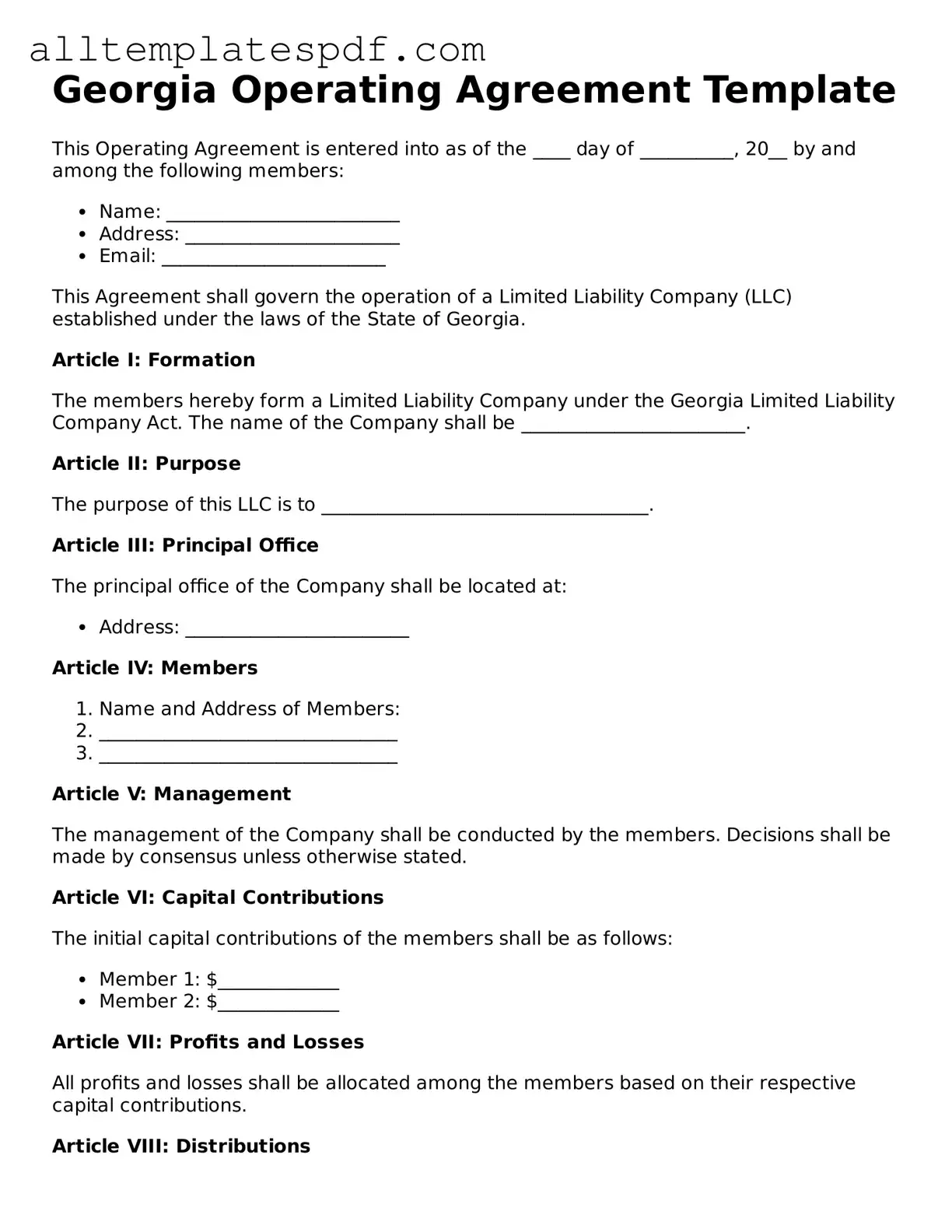Filling out the Georgia Operating Agreement form can be a straightforward process, but many people make common mistakes that can lead to complications down the line. One frequent error is not including all members' names and addresses. Each member's information is crucial for clarity and legal purposes. Omitting this information can create confusion about who is involved in the business.
Another mistake is failing to specify the management structure of the business. Whether the members will manage the business or appoint managers should be clearly stated. This decision impacts how the business operates daily and how decisions are made. Without clarity on management, disputes may arise among members.
Some individuals neglect to outline the capital contributions of each member. This section is essential as it details what each member is investing in the business, whether it be cash, property, or services. Not documenting these contributions can lead to misunderstandings regarding ownership stakes and profit distribution.
Additionally, many people overlook the importance of including a section on profit and loss distribution. It’s vital to specify how profits and losses will be shared among members. A vague or missing agreement can lead to disputes when it comes time to distribute earnings.
Another common error is not addressing what happens if a member wants to leave the business. A well-drafted agreement should include buyout provisions or procedures for transferring ownership. Without these guidelines, a member's exit can become contentious and complicated.
Some forms are filled out without considering the need for amendments. Life changes, such as adding new members or altering management structures, should be anticipated. Including a process for making amendments ensures that the agreement remains relevant and functional as the business evolves.
People often forget to include a dispute resolution clause. This section outlines how disagreements will be handled, whether through mediation, arbitration, or litigation. Without a clear process for resolving conflicts, members may find themselves in prolonged disputes that could harm the business.
Finally, individuals sometimes neglect to have the agreement reviewed by a legal professional. While it might seem like an additional expense, having an attorney review the Operating Agreement can help identify potential pitfalls and ensure compliance with Georgia laws. Investing in this step can save time and money in the long run.
